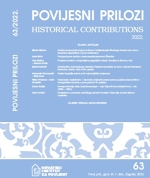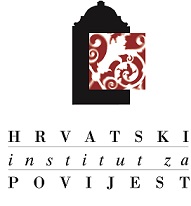Vukovarsko vlastelinstvo – slavonsko-srijemski prostor prema popisima stanovništva i kartografskim izvorima u prvoj polovini 18. stoljeća
DOI:
https://doi.org/10.22586/pp.v41i63.21701Ključne riječi:
Slavonija, vukovarsko vlastelinstvo, komorski popis, atlas vukovarskog vlastelinstva, 18. stoljeće, gospodarstvoSažetak
Premda se autori u radu osvrću na sve komorske popise do sredine 18. stoljeća (popisi iz 1698., 1722., 1728., 1736. i 1749.), kao i na kartografiju koja je prethodila najvažnijem kartografskom izvoru, dovršenom 1733. u formi atlasa, usredotočuju se na analizu komorskoga popisa iz 1728. i navedeni atlas kao izvore iz približno istoga vremena, obilježenog transformacijom jednoga velikog područja iz državnoga vlasništva (komorskoga okruga) u privatno vlasništvo (vlastelinstvo). Na osnovi tih izvora, koji se dopunjavaju, nastoje dati širu sliku stanja jednoga slavonsko-srijemskoga vlastelinskoga gospodarstva prve polovine 18. stoljeća u trenutku njegova stvaranja, tim više što zbog nepostojanja odgovarajućih kartografskih izvora to nije moguće ni za jedno drugo vlastelinstvo. Osim osnovnih podataka kao što su broj i veličina naselja, zastupljenost pojedinih kategorija zemljišnih površina, demografsko i imovinsko stanje i sl., analizom i usporedbom također se nastoji utvrditi relevantnost i vjerodostojnost obaju izvora te podudarnost i različitost sadržaja primjenom deskriptivnih i kvantitativnih metoda.
##submission.downloads##
Objavljeno
Kako citirati
Broj časopisa
Rubrika
Autorska prava
Copyright (c) 2022 Authors and journal

Ovaj rad licenciran je pod Creative Commons Attribution-NonCommercial 4.0 International License.



